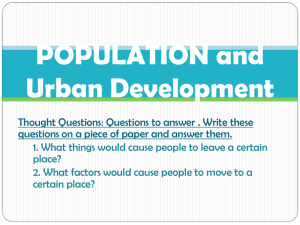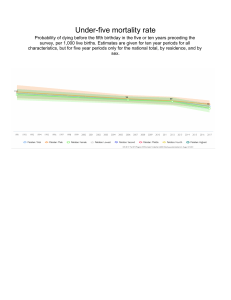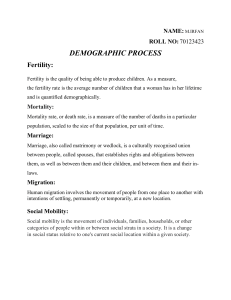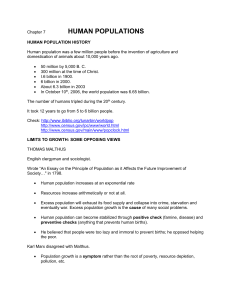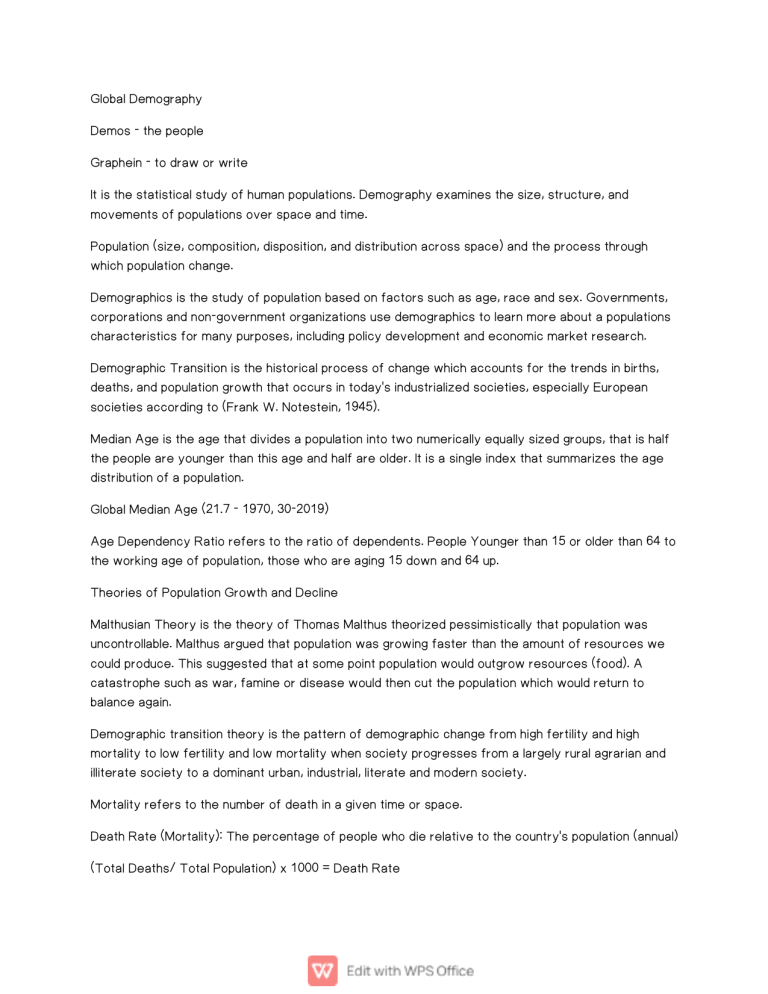
Global Demography Demos - the people Graphein - to draw or write It is the statistical study of human populations. Demography examines the size, structure, and movements of populations over space and time. Population (size, composition, disposition, and distribution across space) and the process through which population change. Demographics is the study of population based on factors such as age, race and sex. Governments, corporations and non-government organizations use demographics to learn more about a populations characteristics for many purposes, including policy development and economic market research. Demographic Transition is the historical process of change which accounts for the trends in births, deaths, and population growth that occurs in today's industrialized societies, especially European societies according to (Frank W. Notestein, 1945). Median Age is the age that divides a population into two numerically equally sized groups, that is half the people are younger than this age and half are older. It is a single index that summarizes the age distribution of a population. Global Median Age (21.7 - 1970, 30-2019) Age Dependency Ratio refers to the ratio of dependents. People Younger than 15 or older than 64 to the working age of population, those who are aging 15 down and 64 up. Theories of Population Growth and Decline Malthusian Theory is the theory of Thomas Malthus theorized pessimistically that population was uncontrollable. Malthus argued that population was growing faster than the amount of resources we could produce. This suggested that at some point population would outgrow resources (food). A catastrophe such as war, famine or disease would then cut the population which would return to balance again. Demographic transition theory is the pattern of demographic change from high fertility and high mortality to low fertility and low mortality when society progresses from a largely rural agrarian and illiterate society to a dominant urban, industrial, literate and modern society. Mortality refers to the number of death in a given time or space. Death Rate (Mortality): The percentage of people who die relative to the country's population (annual) (Total Deaths/ Total Population) x 1000 = Death Rate Fertility refers to the birthrate of a population Birth Rate refers to the number of births per 1000 people per year. (Total Live Births/Total Population) x 1000 = Birth Rate Life Expectation - Expectation of Life at a given age is the average number of years which a person of that age may expect to live, according to mortality pattern prevalent in that country (60 is the new 40, 70 is the new 50). Both sexes 73.2 years Stages of Demography Females 75.6 years Stage 1: Pre-Transition Stage (high stationary) Males 70.8 years Phase characterized by high birth rates, and fluctuating death rates. High Mortality - Prevalence of communicative diseases, famine, poor hygiene, no clean water, and sewage disposal etc. High Fertility - no or little family planning Stage 2: Early Transition (Early expanding) Phase which death rate begins to fall. Birth rates remain high, the population starts to grow rapidly. Low mortality - improved medicine, sanitation, water supply, and improved food production etc. Stage 3: Late Transition Birth Rate starts to decline. The rate of the population growth decelerates. Industrialization and Urbanization, cost of living in urban areas. Stage 4: Post-Transition New Equilibrium has been reached between birth and death rates with a stabilization of the population. Availability of Modern Medicine, Implication of Over Population Positive Side 1. Better Economy 2. Efficient utilization of Resources 3. Medical, agricultural and Industrial Growth 4. Better Labor Force 5. Greater Investment in Capital Reformation Negative Side/ Perils of Over Population 1. Shortage of Food and Land 2. Environmental Problems 3. Problem of Unemployment 4. Poverty and Low Standard of Living 5. Inflation 6. Conflict and War Top Biggest Country in the World in Terms of Population 1. China 6. Brazil 7. Nigeria 2. India 3. United States of America 4. Indonesia 8. Bangladesh 9. Russia 10. Mexico 5. Pakistan 11. Japan 12. Ethiopia 13. Philippines 14. Egypt 15. Vietnam
